If you’re a gardener, then you know that there’s always something new to learn. And if you’re looking for ways to expand your garden, then you might want to consider turning your fish tank into a garden! This can be a great way to add some extra plants to your collection, and it’s a project that anyone can do with a little bit of effort. In this guide, we’ll answer some common questions about how to turn a fish tank into a garden, and we’ll provide some useful tips that will help make the process go smoothly. So read on for information that will help you get started on this fun gardening project!
Why Turning an Old Aquarium into a Garden is a Great Project Idea
If you have an old aquarium that you no longer use, turning it into a garden can be a great way to upcycle it. Not only will you be able to reuse the aquarium, but you can also create a unique and beautiful space in your home.
Finds a new purpose to your old tank
Aquariums are often seen as a one-time purchase. Once you set them up, they become part of your furniture. But what happens when you no longer want or need an aquarium? Most people simply get rid of them, but there are other options. One option is to turn your old aquarium into a garden.
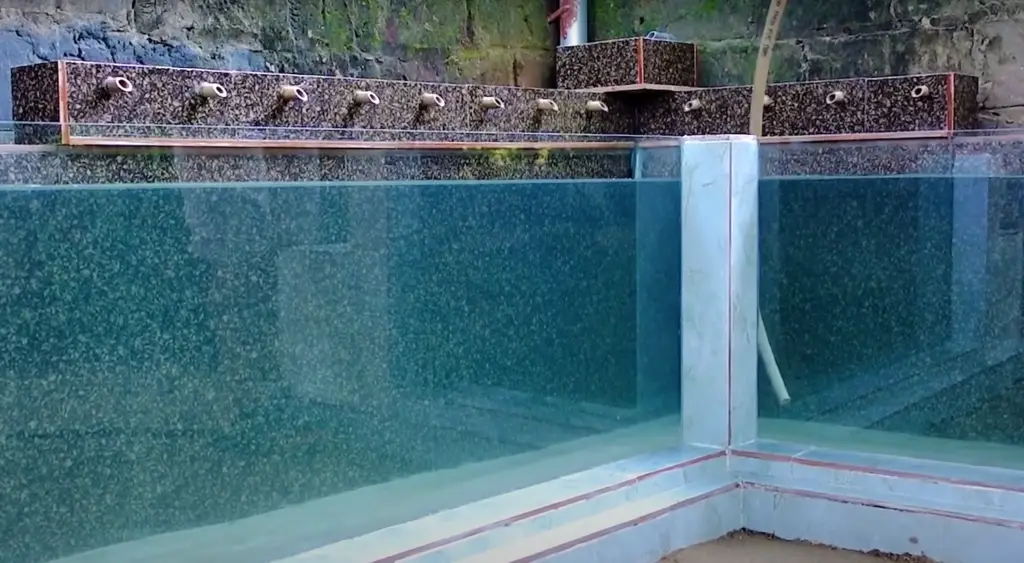
This is a great way to give your old aquarium a new purpose and extend its life. Not only that, but it can also be a fun and unique project that will add character to your home.
It saves you money
Another reason why turning an old aquarium into a garden is a great idea is because it can save you money. If you were to buy all the necessary supplies to set up a new home garden, it would likely cost you more than simply repurposing your old aquarium.
Customization options for your new garden
When you turn an aquarium into a garden, you have complete control over the design. You can choose what plants to grow, how to arrange them, and what type of soil to use. This gives you the opportunity to create a space that is truly unique and personal.
If you are not sure where to start, there are plenty of resources available online and in gardening stores. You can also find used aquariums for sale if you do not have one already.
It can serve as a portable garden
One of the benefits of turning your aquarium into a garden is that it can serve as a portable garden. If you have a small space, such as an apartment, you can move the aquarium around to different areas of your home to change up the look.
Aesthetics
One of the best things about turning a fish tank into a garden is that it can be a real showpiece in your home. A well-designed and planted aquarium can be a real conversation starter and add some personality to your living space.
For example, you can create an aquarium garden specifically for tropical plants. This can add a touch of the tropics to your home and give it a unique look. [1]
If you are someone who loves plants and enjoys being surrounded by them, then having a garden inside your home can be really beneficial for your mental health. Studies have shown that being around plants can help reduce stress levels and improve moods. So, if you are looking for a way to turn your old fish tank into something that will benefit your health, then creating a garden is definitely the way to go.
Types of Fish Tank Gardens
There are two types of fish tank gardens: those with an open lid and those with a closed lid. Each has its own set of benefits and drawbacks that you should consider before making your decision.
Open gardens
An open garden is one where the lid of the fish tank is removed. This type of garden is great for a number of reasons. First, it allows more light to reach the plants, which is essential for photosynthesis. Second, it provides better air circulation, which is important for the health of both the plants and the fish. Third, an open garden is easier to maintain because you don’t have to worry about water evaporation.
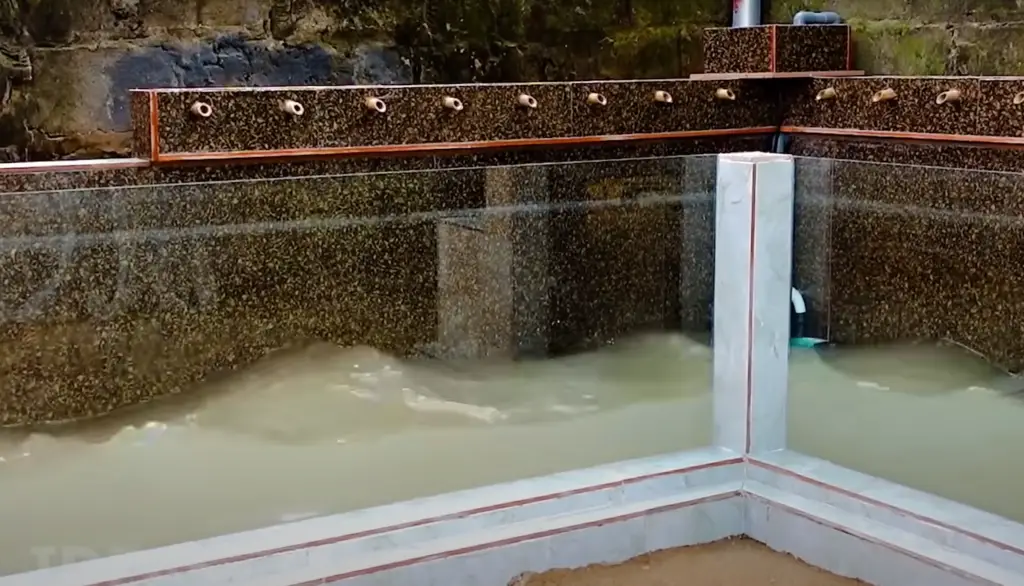
However, there are also some drawbacks to having an open garden. First, without a lid, your fish tank is more susceptible to dust and debris from outside sources. Second, if you have small children or pets, they may be able to access the tank and disturb the delicate ecosystem you’ve created.
Closed gardens
Closed gardens are fish tank gardens that are closed with a lid. These gardens are better called ‘terrariums’ since they provide a more controlled environment for your tropical plants.
However, one drawback is that it can be difficult to access the plants if you need to prune or water them.This type of fish tank garden is harder to maintain because the levels of humidity are harder to control. Additionally, the type of environment created within such a garden is unsuitable for a large amount of plant species.
In order to decide which type of fish tank garden is best for you, it’s important to consider the benefits and drawbacks of each. Think about what type of plants you want to grow and what kind of environment they need in order to thrive. Also, take into account your own lifestyle and whether or not you have the time and patience to maintain a closed garden. [2],[3],[4]
Can All Fish Tanks be Repurposed as Mini-Gardens?
The answer to this question is yes and no. Any fish tank can be turned into a garden, but not all tanks are created equal. The size, shape, and material of your aquarium will determine how successful your garden will be.
For example, if you have a small tank made of glass, it might be difficult to fill it with enough plants to create a thriving mini-ecosystem. However, if you have a larger tank made of either glass acrylic, then you will have more success in growing a variety of plants.
Fish Tank Materials that Work Best for Plant Growth
This leads us to the second factor, the material of the glass tank.
When it comes to materials, acrylic is one of the best options for plant growth. Acrylic is a clear plastic that is often used in aquariums. It is durable and resists damage, which is important if you want to keep your plants looking their best, although when it comes to scratch resistance, it won’t fare as well. Additionally, it is easier to drill holes into acrylic, which will be necessary for planting.
Glass is another popular material for fish tanks. However, glass can be difficult to drill and does not resist breaks as well as acrylic. That aside, glass does provide a clear view of your plants, which some people prefer. [3],[5]
Consider the Size of Your Tank
The size of your tank is one of the most important factors to consider when repurposing it as a garden. A small tank might not be able to support the growth of many plants, and a large tank might be too difficult to maintain.

Ideally, you want to find a happy medium between the two.
This will give you enough space to grow a variety of plants without being too difficult to care for.Additionally, if you are planning on keeping reptiles in your aquarium-turned-garden, then you will need to make sure that the tank is large enough to accommodate them. [3]
Consider the Plants Growing Requirements
Before you start planting, it is important to take into account the requirements of the plants you want to grow. Make sure that they will have enough space to grow and that they won’t overcrowd the fish tank. Next, you will need to choose plants that are appropriate for the amount of light that the aquarium receives, as well as the humidity within the tank. If the aquarium is in a location that doesn’t receive much natural light, you might need to supplement with artificial lighting.
Another important factor is the soil type. Some plants prefer sandy soil while others do better in clay soil. There are also plants that can grow in both types of soil. It is best to choose a plant that is suitable for the type of soil you have in your fish tank.
What Plants Can Grow in a Fish Tank Garden?
There are a wide variety of plants that can be grown in a fish tank garden. Some of the most popular plants include:
- Lettuce
- Spinach
- Cabbage
- Kale
- Chard
- Herbs (such as basil, oregano, and mint)
Of course the list doesn’t end there. While it’s preferable to grow plants that prefer medium-low light conditions and higher humidity, as long as you will be providing the plants with the proper care, almost any plant can be grown in a fish tank garden.
Even garden veggies like tomatoes can be grown in a fish tank garden, though you will need to provide them with a support system (such as a tomato cage) and make sure they get enough light. As long as they have enough space to grow obviously!
If you are looking for more ideas, there are many online resources that can help you choose the right plants for your fish tank garden. Although due to the limited space, it’s not recommended to grow large plants in a fish tank garden, so keep this fact in mind. [2]
Gather the Supplies You Will Need
Once you have chosen the plants you want to grow, it is time to gather the supplies you will need. Here’s an overview of what you will need for this project, besides the fish tank!
Gravel
You will need gravel to line the bottom of your fish tank. This will help with drainage and prevent waterlogging of your plants’ roots. You can either buy gravel from a gardening store or collect it outdoors. If you choose to collect gravel from outdoors, make sure to wash it thoroughly before using it in your fish tank since it might contain bacteria or other harmful substances.
Activated charcoal
Another important component of your fish tank garden is activated charcoal. This substance helps to keep the water in your tank clean and free of toxins. You can buy activated charcoal at a pet store or online.
Small seedlings or seeds
Of course, you will need plants for your garden! You can either start with small seedlings or grow your plants from seeds. If you choose to grow your plants from seeds, make sure to get a soil mix that is specifically designed for growing plants in fish tanks.
Spray bottle
A spray bottle is a helpful tool for watering your plants. Make sure to get one that has a fine mist setting so you don’t accidentally damage your plants.
Potting mix
Of course we couldn’t forget to bring up yet another crucial element of any garden. Be it a pot or a fish tank, you will need potting mix to grow your plants in. Potting mix is a type of soil that is well-suited for growing plants in containers. You can buy potting mix at a gardening store or you can make one yourself.
Detergent
You will need a mild detergent to clean the fish tank before you start planting. Make sure the detergent is compatible with the material of your tank.
Decorations (optional)
If you want, you can add some decorations to your fish tank garden. This is completely optional and up to you! Some people like to add rocks or statues to their gardens, while others prefer to keep it simple.
Aquarium rocks or stones can be used as decoration in your garden and also serve a practical purpose. They can help to anchor plants in place and act as a support for climbing vines.
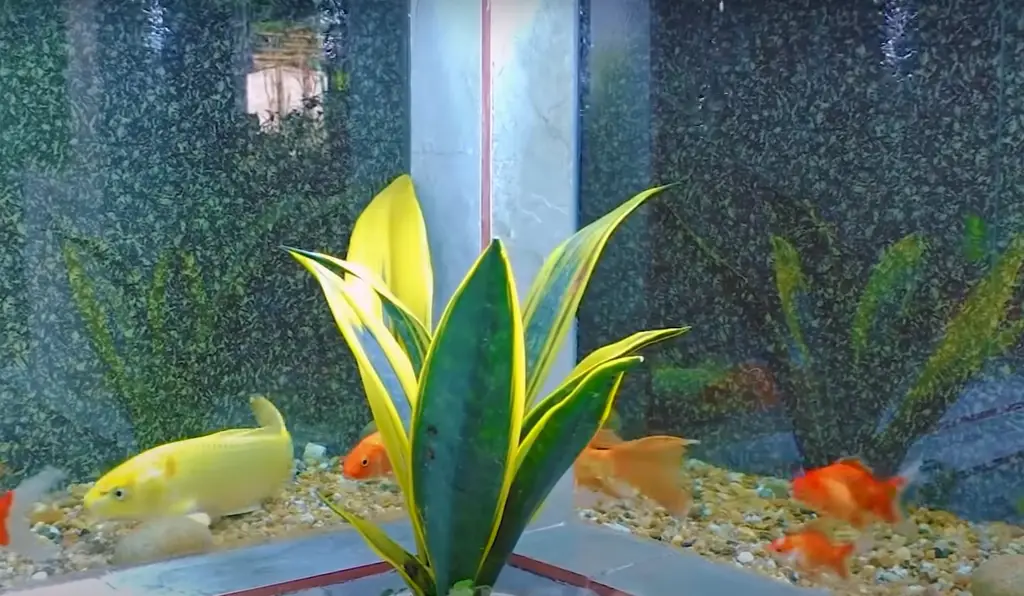
No matter what you choose,remember that the most important thing is that your plants have enough space to grow.
Repurposing Your Fish Tank as a Garden
Now that you have gathered all of the supplies you need, it is time to start repurposing your fish tank as a garden!
Clean the tank with hot water
The first step is to clean the fish tank. You will need to wash the insides with hot water and a mild soap. Be sure to rinse the tank well afterwards. You may also need to remove any algae or other growths from the sides of the tank. This can be done by scrubbing the inside of the tank with a sponge or brush. [1],[2],[4],[6]
Use detergent if needed
If the tank is very dirty, you may need to use a detergent. To use it safely, mix the detergent with hot water and apply it to the inside of the tank. You may need to repeat this process a few times to get the tank completely clean.
Get rid of all chemicals
After the tank is clean, you will need to remove all chemicals left after using a detergent on it. To do this, you can rinse the tank with a solution of water and vinegar. [1],[2],[6]
Check for cracks
Once the tank is clean, you will need to check for leaks. To do this, fill the tank with water and let it sit for a few hours. If there are any leaks, the water will escape from the tank. You can then repair the leaks with a sealant.
You should now have a clean fish tank that is ready to be turned into a garden! In the next section, we will discuss how to prepare the soil for planting.
Add gravel at the bottom
The next step is to add gravel at the bottom of the fish tank. This will aid with drainage and keep the roots of your plants healthy. You can find gravel at any gardening store or online. You will need to decide how deep you want the layer of gravel to be, usually it will depend on the depth of your tank. A good rule of thumb is to make it about as deep as the roots of your plants.
Drainage is one of the most important things to consider when starting an indoor garden. Without proper drainage, your plants will quickly become waterlogged and could die. Most fish tanks have a hole in the bottom that can be used for drainage, but you’ll still need to add a layer of rocks or gravel to help keep the water from draining too quickly.
Add the activated charcoal on top
After the gravel is in place, you will need to add a ½ inch layer of activated charcoal. This will help to keep the environment clean and free of toxins.
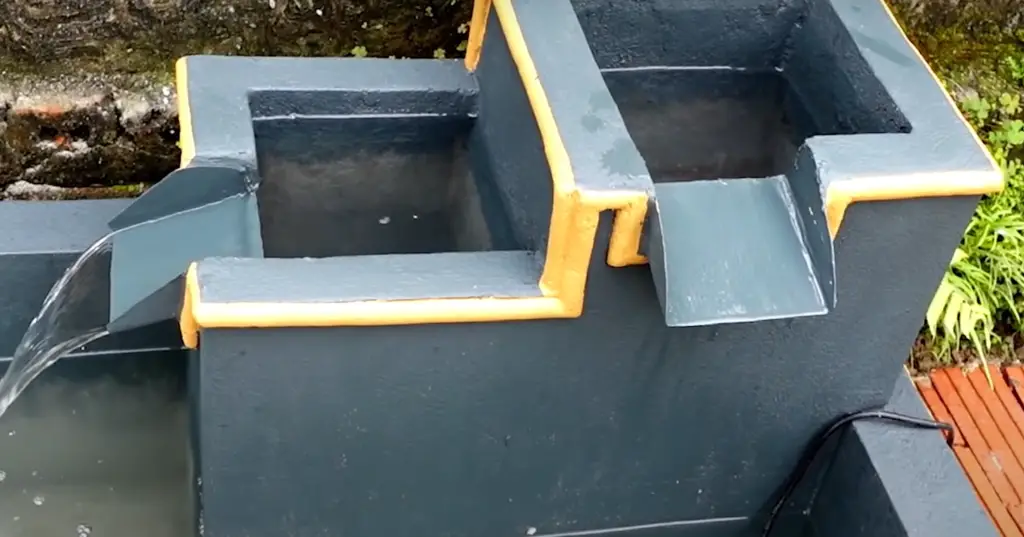
Activated charcoal is not only a great way to get rid of the bacteria, but also improves the drainage even further and ensures your soil will stay fresh for longer.
Add sphagnum moss if you need
The next step is to add sphagnum moss if you need to. This will help to keep the roots of your plants moist. You can find this moss at any gardening store or online.
Sphagnum moss is a plant that is commonly used as a soil-less media for growing plants. It is also known as peat moss. Sphagnum moss has many benefits for gardeners. Some of these benefits include:
- It holds moisture very well, which is beneficial for plants that require high levels of humidity.
- It has a neutral pH, which means it will not alter the pH of your soil.
- It is an excellent source of organic matter.
- It is lightweight and easy to transport.
- Adds acidity
Keep in mind that it’s recommended to add sphagnum moss only if you are planning on planting tropical plants or plants that require high levels of humidity.
Sphagnum moss is not necessary, but it does help to keep the roots of your plants reasonably moist. If you live in a dry climate, or if your fish tank doesn’t get much sunlight, adding a layer of Sphagnum moss can be beneficial. Moss is often used in terrariums and vivariums because it helps retain moisture and prevents evaporation.
However, because sphagnum moss is an organic material, it will break down over time. You will need to replace it every few years. [6]
Adding gravel and activated charcoal to your fish tank is an important step in preparing it for planting. In the next section, we will discuss how to choose the right plants for your garden.
Add quality soil on top
After the gravel and activated charcoal are in place, you will need to add quality soil on top. This will be the home of your plants.
It is important to choose the right type of soil for your plants. As we mentioned before, regular potting soil will be ideal for your fish tank garden. You will need to find a potting mix that is specifically designed for indoor gardens. This type of soil will provide the necessary nutrients for your plants to thrive. Be sure to choose a soil that is well-draining and free of toxins. This will help to ensure that your plants don’t become waterlogged.
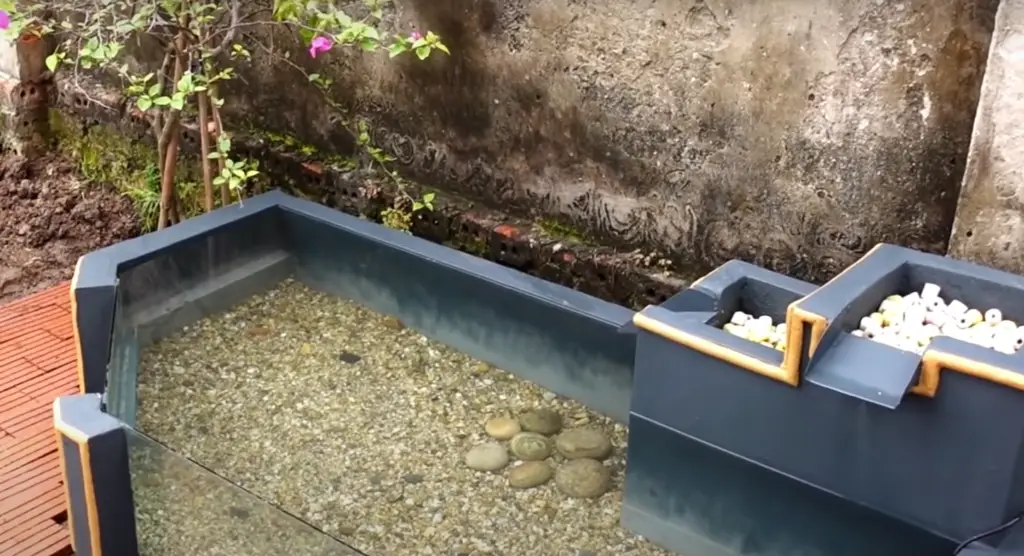
Once you have added the soil, you are ready to start planting!
Plan the plant arrangements
The next step is to plan the plant arrangements. You will need to consider the size and shape of your fish tank when planning the layout. Be sure to leave enough space between each plant so that they have room to grow.
When choosing plants for your garden, it is important to consider their root system. Some plants have very aggressive roots that can quickly take over a small space. If you are unsure about a particular plant, ask a gardening expert or do some research online. [1]
Once you have chosen the plants for your garden, it is time to finally place them in their new home!
Plant the seeds or seedlings
The next step is to plant the seeds or seedlings. If you are using seedlings, simply plant them in the potting mix and add them to the tank. If you are growing your plants from seeds, follow the instructions on the packet before planting them in the potting mix. Be sure to plant them at the correct depth of the holes and spacing. Once your plants are in place, water them lightly with a spray bottle. [1],[2],[4],[6]
Place decorations in the tank
After your plants are in place, you can add some decorations to the tank. This is completely up to you and will depend on the look you are going for.
You can find these decorations at your local gardening store or online.
Proper Care After Your Fish Tank Garden Is Set Up
After your fish tank garden is all set up, it is important to give it the proper care. This includes ensuring that the plants are getting enough light and water. As well as some extra care steps.
Water the plants regularly
One of the most important things you can do for your fish tank garden is to water the plants regularly. This will ensure that they are getting the moisture they need to stay healthy.
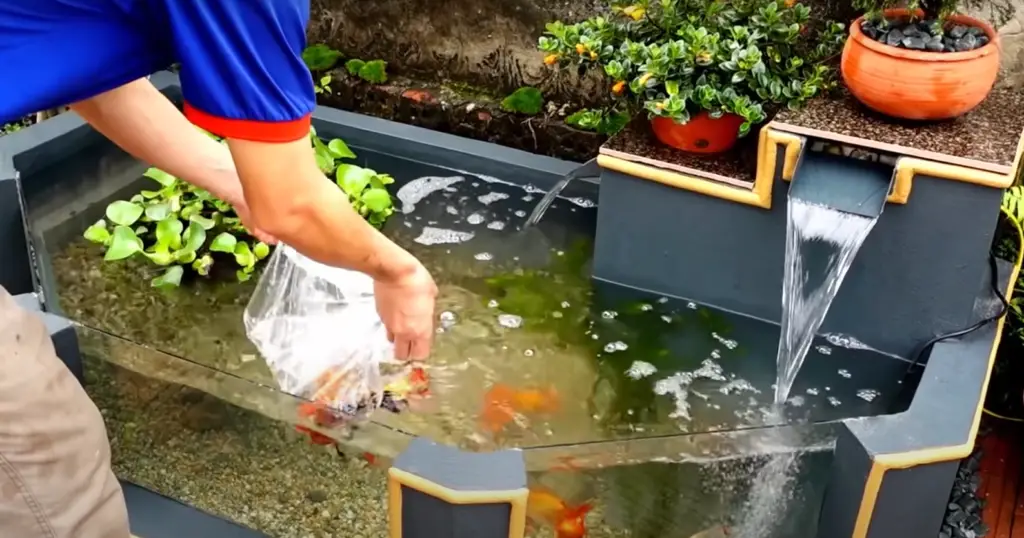
The best way to do this is by using a spray bottle to mist the plants with water. You can also use a watering can, but be careful not to overwater the plants. Consider the watering requirements of each plant in your garden and water accordingly. Keep the spray bottle near the tank for easy and fast access.
Keep the light in mind
Another important factor in caring for your fish tank garden is the light. Most plants need at least six hours of sunlight a day to grow properly. For this reason, make sure to place the fish tank in a location where it will get plenty of light.
You can also grow lights for certain plant species to supplement the natural light if needed. Just be sure to follow the manufacturer’s instructions when using grow lights.
Fertilize the garden if needed
In order to keep your plants healthy, it is important to fertilize them on a regular basis. You can use either liquid or granular fertilizer for this purpose. Be sure to follow the instructions on the fertilizer package. Overfertilizing can damage the plants, so it is important to be cautious.
Fertilizing is not always necessary, but if you notice that the plants are not growing as well as they should be, then it may be time to fertilize.
Keep the tank clean
It is important to keep the fish tank clean, in order to maintain a healthy environment for the plants and fish. This means that you will need to carefully clean the walls of your tank garden when they get dirty.
You can use a sponge or soft cloth to clean the walls of your tank. Avoid using any harsh chemicals, as they can damage the plants. [1],[2]
Look out for the pests and diseases
Pests and diseases can be a problem in any garden, including fish tanks. Always keep an eye out for any signs of pests or diseases. If you notice anything unusual, take measures as soon as you can.
Most common pests you can encounter in fish tank gardens are mealworms and ants. As for diseases, root rot is a common problem.
There are many ways to combat pests and diseases in your fish tank garden. However, using toxic pesticides indoors can harm your health, so it’s recommended to use non-toxic methods. [1],[8]
How to Create Your Own Potting Soil
When you’re used to gardening in the ground, it can be confusing to try and figure out what kind of soil to use for your new fish tank garden. The most important thing to remember is that potting soil is different from the garden soil you’re probably used to. Garden soil is heavier and will compact in the smaller space of a fish tank, which can lead to problems with drainage. Potting soil is lighter and airier, which helps prevent compaction and allows your plants’ roots to breathe.
So from this we can conclude that one of the most important things you need for a fish tank garden is potting soil. Potting soil is a type of soil that is specifically designed for plants in containers.
However, it is also possible to make your own potting soil at home. If you want to create your own potting soil, you will need:
- 5 quarts of vermiculite or perlite
- 10 quarts of coconut coir
- 5 quarts of peat moss
- Some fine sand
- 5 quarts of compost or manure
- Pelleting fertilizer
To make your own potting mix, simply mix together required parts of each ingredient. Once you have mixed everything together, add water until the potting mix is moist but not soggy.
Now you have your own potting mix to add to your fish tank garden! [7]
How to Properly Arrange the Plants in Your Tank
One of the most important things to consider when setting up your fish tank garden is how you will arrange the plants. The arrangement of the plants can have a big impact on the overall look of your garden, as well as the health of the plants.
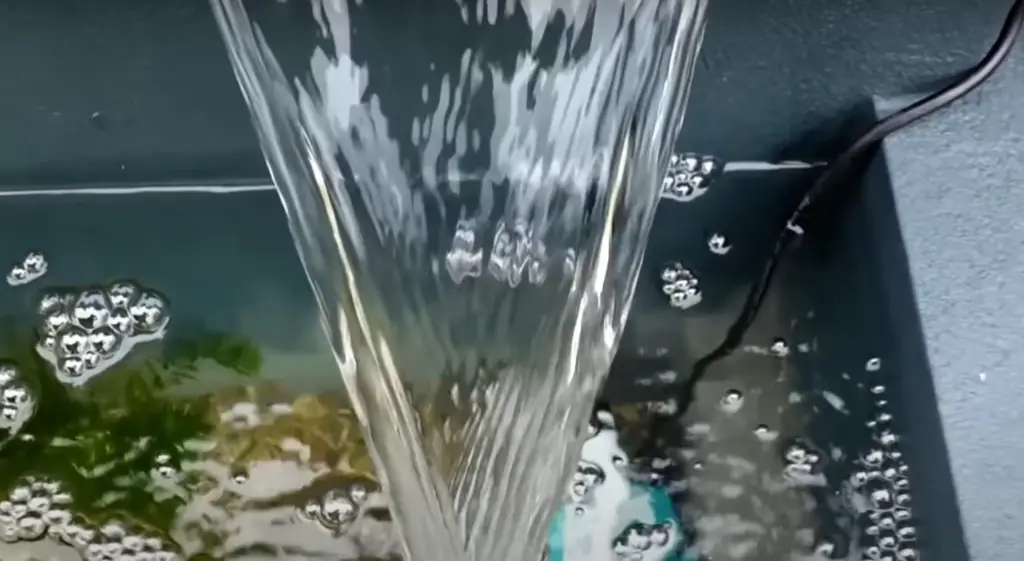
It’s important to not overcrowd the plants in your tank. This can lead to problems with the roots of the plants, as some of them may simply not grow. You should also consider the size of the plants when you are arranging them. Some plants will grow to be very large, while others will stay small.
You should also give each plant enough space to spread its roots. If the roots of a plant are crowded, it can cause problems with the plant’s growth.
You can create a very striking effect by contrasting the colors of the plants. [9]
Comparison of Indicators for Turning a Fish Tank Into a Garden
Turning a fish tank into a garden can be a great way to grow fresh herbs and vegetables while also keeping fish as pets. However, there are various factors to consider when setting up such a system. This table compares different indicators to help you choose the best approach for your needs.
| Indicator | Hydroponic System | Aquaponic System |
|---|---|---|
| Water Usage | Uses less water | Recycles water and uses less water than traditional farming |
| Nutrient Input | Requires regular nutrient input | Uses fish waste as a natural nutrient source |
| Fish Species | Not limited by fish species | Requires specific fish species that can tolerate the hydroponic environment |
| Plant Species | Can grow a variety of plants | Some plants may not grow well in an aquaponic environment |
| System Complexity | Relatively simple to set up and maintain | Requires more knowledge and maintenance due to the interaction between fish and plants |
The table compares two common methods of turning a fish tank into a garden: a hydroponic system and an aquaponic system. Hydroponic systems use nutrient-rich water to grow plants, while aquaponic systems use fish waste as a natural fertilizer for the plants. The table examines different indicators such as water usage, nutrient input, fish and plant species, and system complexity, to help you make an informed decision about which system is best for your needs.
FAQ
Can you grow tomatoes in a fish tank?
Yes, you can grow tomatoes in a fish tank. However, you will need to provide them with plenty of light and water. You may also need to fertilize the soil to provide the plant with some nutrients. However since tomatoes are quite large plants, you will need a very large fish tank to grow them.
Can you grow vegetables in a fish tank?
Yes, you can grow vegetables in a fish tank. However, it is important to note that not all vegetables are suitable for growing in a fish tank. For example, root vegetables such as carrots and potatoes require a lot of space to grow properly and may not do well in a fish tank. Instead, focus on growing leafy greens and other plants that don’t require a lot of space.
How do you repurpose a fish tank?
One of the options you can repurpose your fish tank as is indoor garden. You can use it to grow your own herbs, leafy greens, or flowers. If you have a fish tank that is no longer being used, here are some useful tips on how to turn it into a garden.
Can all vegetables be grown in a fish tank?
Unfortunately, not all vegetables can be grown in a fish tank. Some vegetables require more space than a fish tank can provide. However, there are still plenty of vegetables that can be successfully grown in a fish tank garden. Some of the most popular choices include lettuce, spinach, tomatoes, peas, and beans.
What type of fish tank is best for a garden?
There are a few things to consider when choosing a fish tank for your garden. The size of the tank is important, as you’ll need to make sure it’s big enough to accommodate the plants you want to grow. The material the tank is made from is also important; glass is a good choice as it won’t absorb chemicals from the soil or water. Finally, you’ll need to decide whether you want a freshwater or saltwater tank.
If you’re not sure which type of fish tank is best for your garden, ask a professional at your local pet store. They can help you choose the right size and material for your needs.
With a little bit of planning, you can easily turn a fish tank into a beautiful garden. Just be sure to do your research and ask a professional for help if you’re not sure where to start.
What plants are best for a fish tank garden?
There are a few different types of plants that work well in fish tanks. For example, floating plants like water hyacinth and water lettuce help to keep the water clean by absorbing nutrients and providing shade for your fish. Submerged plants like hornwort and anacharis also help to keep the water clean by taking in carbon dioxide and releasing oxygen. Lastly, you’ll want to choose some decorative plants like java ferns or amazon swords to add some color and interest to your tank.
Before adding any plants to your tank, be sure to research whether or not they are safe for your particular type of fish. Some fish like to nibble on plant leaves, so you’ll want to avoid species that are known for being finicky eaters.
How can you keep the plants in your tank healthy?
You need to make sure that the plants in your tank have enough light and water. You also need to fertilize the plants regularly. Then, the plants should be able to thrive in your tank.
If you want to keep the fish in your tank healthy, you need to make sure that they have enough food and water. You also need to clean the tank regularly. Then, the fish should be able to thrive in your tank.
If you are not sure how to do this, you can ask for help from a local garden center or nursery. They can help you choose the right plants for your tank and give you tips on how to care for them.
What are the benefits of having a fish tank garden?
One of the benefits of having a fish tank garden is that it can help to oxygenate the water. This is because plants release oxygen into the water as part of their natural process of photosynthesis. In addition, a fish tank garden can also provide a place for fish to hide and feel safe from predators.
Another benefit of having a fish tank garden is that it can help to filter and clean the water. Plants act as natural filters, and they help to remove harmful toxins and chemicals from the water. This means that your fish will have cleaner and healthier water to swim in.
Finally, a fish tank garden can simply make your aquarium look more attractive! Adding some greenery to your tank can give it a whole new look, and it can be a fun way to personalize your space.
How often do you need to water an aquarium garden?
You should water your aquarium garden every week, depending on the size of your tank and the number of plants you have. If you have a lot of plants, you may need to water more often.
To water your aquarium garden, simply use a small watering can or pitcher to pour fresh water into the tank. Be sure not to add too much water at once, as this can cause problems for your fish.
After you’ve added fresh water, it’s important to monitor the level of dissolved oxygen in the tank. Dissolved oxygen is essential for fish health, so if the level drops too low, it could be fatal for your fish.
If you’re not sure how to check the dissolved oxygen levels in your tank, you can purchase a dissolved oxygen test kit at your local pet store.
Once you’ve added fresh water and checked the dissolved oxygen levels, you should give your plants a little fertilizer. You can buy aquarium plant fertilizer at most pet stores.
Simply add the recommended amount of fertilizer to the tank, and then watch as your plants grow!
What are some tips for keeping an aquarium garden healthy?
Aquarium gardens are a little bit more work than your average fish tank, but they can be well worth the effort. Here are a few tips to help you keep your aquarium garden healthy and thriving:
- Make sure you have plenty of plants. Aquarium gardens need a lot of vegetation to thrive, so make sure you have at least 50% plants by volume.
- Choose the right plants. Not all plants are created equal when it comes to aquariums. Some species of plant release toxins that can harm or even kill your fish, so it’s important to do your research before adding any new plants to your tank.
- Create a varied landscape. Aquarium gardens should have different levels, with taller plants in the back and shorter plants in the front. This will give your garden a more natural look and feel, and it will also provide hiding places for your fish.
- Provide plenty of light. Most aquarium plants need at least eight hours of light per day to prosper. If you can’t provide this much natural light, you’ll need to invest in some quality artificial lighting.
- Keep an eye on your water quality. Aquarium gardens are particularly sensitive to changes in water quality, so it’s important to test your water regularly and make sure everything is within the normal range. If you notice any problems, act quickly to correct them.
What do I do with an old fish tank?
If you have an old fish tank that you’re no longer using, you may be wondering what to do with it. Why not turn it into a garden? A fish tank garden is a great way to add some greenery to your home without taking up too much space. Here’s how to do it:
First, decide what type of plants you want to grow in your fish tank garden. You’ll need to choose plants that are appropriate for the size and shape of your tank as well as the type of soil you’re using. Once you’ve chosen your plants, it’s time to prepare the soil.
To do this, mix together equal parts of potting soil and sand. You can also add some organic matter such as compost or manure to the mix. Once you’ve prepared the soil, it’s time to plant your seeds or starts.
Place your plants in the tank and then add water. Be sure to keep the soil moist but not too wet. You may need to adjust the amount of water you’re giving your plants as they grow.
Once your plants are established, you can start adding fish to your garden. Choose fish that are compatible with the plants you’re growing. Goldfish are a good option for most gardens.
Can I turn a fish tank into a greenhouse?
Yes, you can turn a fish tank into a greenhouse with a few modifications. First, you will need to remove the fish and all of the water from the tank. Next, you will need to add some soil and plants to the tank. Finally, you will need to add a light source to the top of the tank. It allows the plants to grow and the fish to live in the tank.
With these simple steps, you can easily turn your fish tank into a beautiful garden that will thrive all year long!
Can you grow mint in a fish tank?
No, you cannot grow mint in a fish tank. The active chemical in mint oil is most likely toxic to fish.
Mint is a fast-growing plant that can quickly take over an aquarium. It’s also very invasive, so it’s best to avoid planting it in your tank.
If you’re looking for a plant to add to your fish tank, consider java fern or anubias. These plants are slow-growing and won’t take over your aquarium as mint can. Plus, they’re both beautiful additions to any fish tank!
Can succulents grow in a fish tank?
The short answer is yes, succulents can grow in a fish tank without water! The key is to make sure that the succulents have enough light and air circulation. If you’re worried about your plants getting too much sun, you can always place a sheer curtain over the top of the tank.
Here are a few things to keep in mind when growing succulents in a fish tank:
- Choose a well-ventilated location for your tank. A spot near a window is ideal.
- Place a layer of gravel or sand at the bottom of the tank to help with drainage.
- Water your succulents regularly, but be sure not to overwater them. Allow the soil to dry out completely between watering.
- Fertilize your plants every few weeks with a succulent fertilizer.
Useful Video: Turn your old garden corner into a great relaxing place with this simple waterfall fish tank
Conclusion
If you’re looking for a fun and easy project that can add some life (literally) to your home, why not try turning your fish tank into a garden? It’s entirely possible, and doesn’t require much effort or know-how. All you need is a clean tank, some gravel and activated charcoal to create a drainage system, potting soil, and plants of your choice. So get creative and have fun with it!
References:
- https://www.fallsgarden.com/fish-tank-garden/
- https://www.yourindoorherbs.com/5-easy-steps-to-turn-your-old-fish-tank-in-a-stunning-garden/
- https://terrariumtribe.com/choose-terrarium-container/
- https://www.thespruce.com/how-to-make-terrariums-848007
- https://fishlab.com/glass-vs-acrylic-aquarium/
- https://www.gardenguides.com/how_7901243_grow-herbs-terrarium.html
- https://www.almanac.com/how-make-your-own-potting-soil
- https://www.gardeningknowhow.com/special/containers/container-pests.htm
- https://modernfarmer.com/2020/07/thinning-101-how-to-tackle-overcrowded-seedlings/





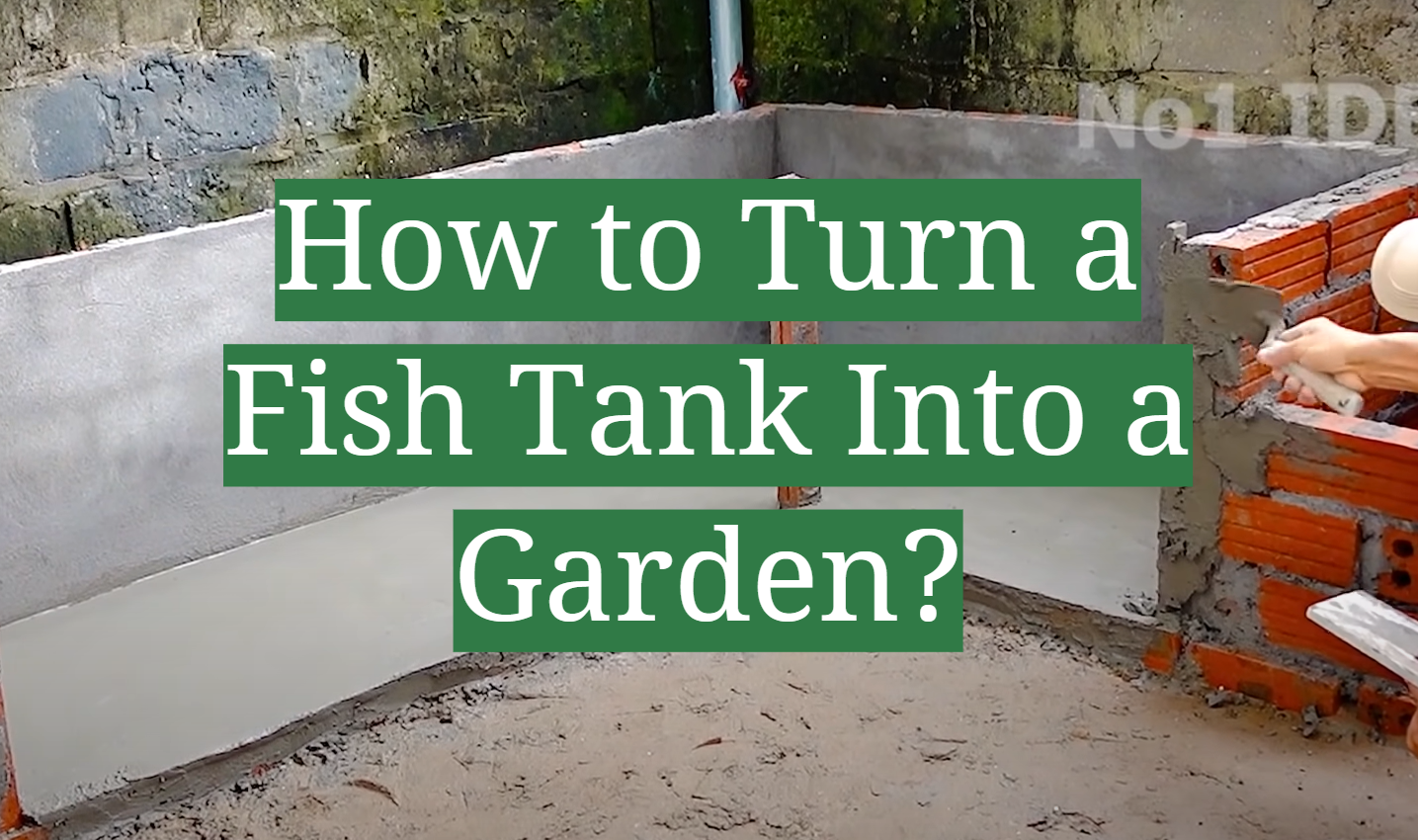




I have personal experience on outdoor fish tank ideas. I have a friend who has one in their backyard, and it’s a really beautiful addition to their landscaping. It’s a great way to add some life and color to your yard, and it’s also a great way to have a little bit of nature right at your fingertips. If you’re thinking about adding an outdoor fish tank to your yard, there are a few things you’ll want to keep in mind.
First of all, you’ll need to make sure that you have enough room for it. Outdoor tanks can be a little bit bigger than indoor tanks, but you’ll still need to make sure that you have enough space for it. You’ll also need to make sure that the spot you choose is sunny enough. Fish need sunlight in order to thrive, so make sure that your tank is in a spot where it will get plenty of light.
Finally, you’ll need to make sure that the tank is properly sealed. Outdoor tanks can be susceptible to weather conditions, so you’ll want to make sure that everything is watertight before you put any fish in there. With those things in mind, an outdoor fish tank can be a great addition to your backyard!